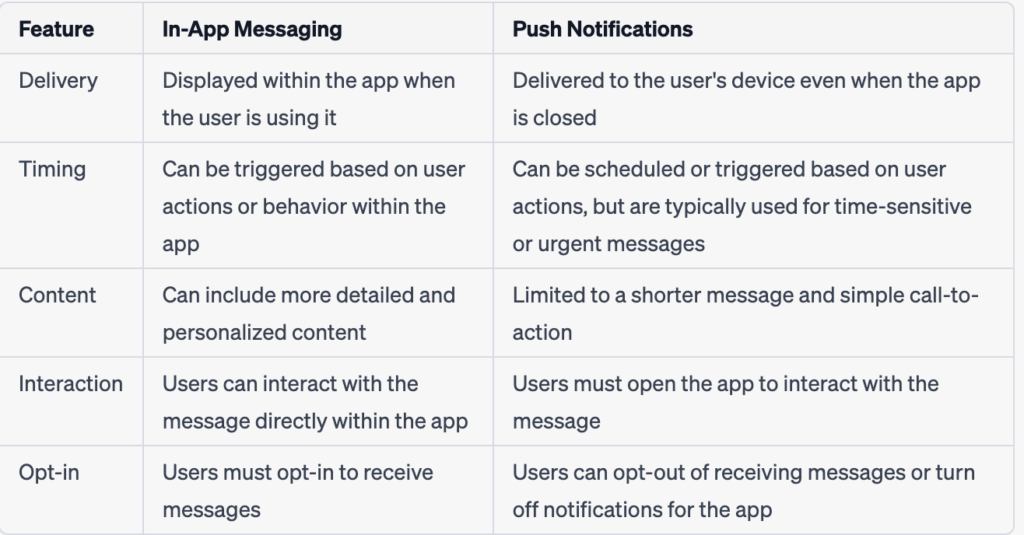The Ultimate Guide to Building Consumer Apps with High Engagement and Retention
In today’s digital age, mobile applications have become an integral part of our lives. From ordering food to booking a ride, apps have revolutionized the way we interact with the world around us. But, with millions of apps available in app stores, building an app that stands out from the crowd can be a challenging task.
To succeed in this competitive market, developers must focus on building apps that have high engagement and retention rates. In this article, we’ll explore the strategies and tactics that developers can use to build consumer apps that users love.
Understanding User Behavior
Before we dive into the tactics for building high-engagement apps, it’s important to understand user behavior. Most users download an app, try it out for a few days, and then abandon it. This is because they don’t find the app useful or engaging enough to keep using it. Understanding user behavior can help developers design an app that users will find valuable and engaging.
One of the best ways to understand user behavior is to conduct user research. Developers can use surveys, focus groups, and other research methods to gather insights about users’ needs, wants, and preferences. By understanding user behavior, developers can design an app that meets users’ needs and keeps them engaged.
Building a User-Centric Design
Once developers have a good understanding of user behavior, they can start building a user-centric design. User-centric design focuses on creating an app that meets users’ needs and preferences. This means designing an app that is easy to use, visually appealing, and offers a great user experience.
To build a user-centric design, developers should focus on the following:
- Simplicity: Keep the design simple and intuitive. Users should be able to navigate the app easily without getting lost.
- Visual Appeal: Use colors, typography, and graphics that are visually appealing and consistent with the brand.
- Personalization: Offer users the ability to personalize the app based on their preferences.
- User Feedback: Collect user feedback and use it to improve the app’s design.
Results
Gamification
Gamification is the process of adding game elements to an app to make it more engaging and fun for users. Gamification can help developers create an app that users will want to use again and again. Some common gamification elements include:
- Points and Rewards: Offer users points and rewards for completing certain tasks within the app.
- Badges and Achievements: Give users badges and achievements for reaching certain milestones within the app.
- Leaderboards: Allow users to compete with each other by displaying a leaderboard of top performers.
- Challenges: Create challenges that users can complete within the app.
Push Notifications
Push notifications are messages that are sent to users’ devices to notify them of new content or events within the app. Push notifications can help developers keep users engaged with the app by reminding them to use it. However, it’s important to use push notifications sparingly, as too many notifications can be annoying and lead to users uninstalling the app.
To effectively use push notifications, developers should focus on the following:
- Timing: Send notifications at the right time, when users are most likely to engage with the app.
- Relevance: Send notifications that are relevant to users’ interests and preferences.
- Personalization: Personalize notifications based on users’ behaviors and preferences.
- Value: Offer value in the notification by providing information or incentives that users will find useful.
In-App Messaging
In-app messaging is a way for developers to communicate with users within the app. In-app messaging can help developers keep users engaged with the app by providing them with useful information or tips.
To effectively use in-app messaging, developers should focus on the following:
- Timing: Send messages at the right time, when users are most likely to engage with the app.
- Relevance: Send messages that are relevant to users’ interests and preferences.
- Personalization: Personalize messages based on users’ behaviors and preferences.
- Value: Offer value in the message by providing information or incentives that users will find useful.
Regular Updates
Regular updates can help developers keep users engaged with the app by providing them with new features and content. Regular updates can also help developers address bugs and improve the app’s performance. To effectively use regular updates, developers should focus on the following:
- Frequency: Provide updates on a regular basis, but not too frequently as to overwhelm users.
- Features: Add new features that users will find useful and engaging.
- Content: Provide new content, such as articles or videos, that users will find interesting and relevant.
- Bug Fixes: Address bugs and improve the app’s performance.
App Store Optimization
App Store Optimization (ASO) is the process of optimizing an app’s visibility and ranking on app stores. ASO can help developers increase the app’s visibility and attract more users. To effectively use ASO, developers should focus on the following:
- Keywords: Use relevant keywords in the app’s title, description, and tags.
- Visuals: Use high-quality visuals, such as screenshots and videos, that showcase the app’s features and benefits.
- Ratings and Reviews: Encourage users to rate and review the app, as positive ratings and reviews can increase the app’s ranking.
- Localization: Localize the app’s description and keywords to reach users in different countries and languages.
Push notifications vs In-app messaging
In-app messaging and push notifications are both effective ways to communicate with users and keep them engaged with an app.
In-app messaging is particularly useful for delivering more detailed and personalized content, while push notifications are better for delivering time-sensitive or urgent messages.
It’s important to use both methods strategically and thoughtfully to avoid overwhelming or annoying users. By providing valuable and relevant content through both in-app messaging and push notifications, an app can increase engagement and retention among its users.

Examples of apps that use these strategies
here are some examples of apps that effectively use the strategies and tactics mentioned in the article to build high engagement and retention:
- TikTok: TikTok is a video-sharing app that has exploded in popularity over the past few years. The app uses gamification to keep users engaged and motivated to create and share videos. For example, the app offers challenges and trends that encourage users to create videos around specific themes and styles. TikTok also uses a powerful algorithm that recommends videos to users based on their interests and behaviors, which keeps users coming back for more.
- Netflix: Netflix is a streaming platform that uses personalization and regular updates to keep users engaged. The platform uses machine learning to recommend movies and TV shows to users based on their viewing history and preferences. Netflix also releases new original content on a regular basis, which gives users a reason to keep coming back to the platform.
- Headspace: As mentioned earlier, Headspace is a meditation app that effectively uses push notifications to keep users engaged. The app sends users daily reminders to meditate and provides personalized recommendations based on their usage history. Headspace also offers a variety of meditation programs and courses, which gives users a reason to keep using the app.
- Strava: Strava is a fitness app that uses gamification and social features to keep users engaged. The app allows users to track their workouts, compete with friends, and join challenges and groups. Strava also offers a premium membership that provides users with additional features and benefits, which incentivizes them to keep using the app.
- Robinhood: Robinhood is a stock trading app that effectively uses push notifications and in-app messaging to keep users engaged. The app sends users updates on their portfolio performance and provides personalized recommendations based on their investment history. Robinhood also offers a variety of educational resources and tools, which helps users make informed investment decisions and stay engaged with the app.
Overall, these apps are great examples of how to effectively use the strategies and tactics mentioned in the article to build high engagement and retention. By focusing on creating a user-centric experience, using gamification, offering regular updates and valuable content, and using push notifications and in-app messaging effectively, these apps have been able to attract and retain a large and loyal user base.
Related Posts
Conclusion
Building a consumer app with high engagement and retention requires a user-centric approach, gamification, effective use of push notifications and in-app messaging, regular updates, and app store optimization. By following these strategies and tactics, developers can create an app that users will love and keep coming back to. Remember, understanding user behavior and designing an app that meets their needs and preferences is the key to building an app with high engagement and retention.
In conclusion, building a high-engagement consumer app is not an easy task. It requires a deep understanding of user behavior, a user-centric design, effective use of gamification, push notifications and in-app messaging, regular updates, and app store optimization. But, with the right strategies and tactics, developers can create an app that users will love and keep coming back to. By focusing on creating an engaging and valuable user experience, developers can build an app that stands out in the crowded app market.
















